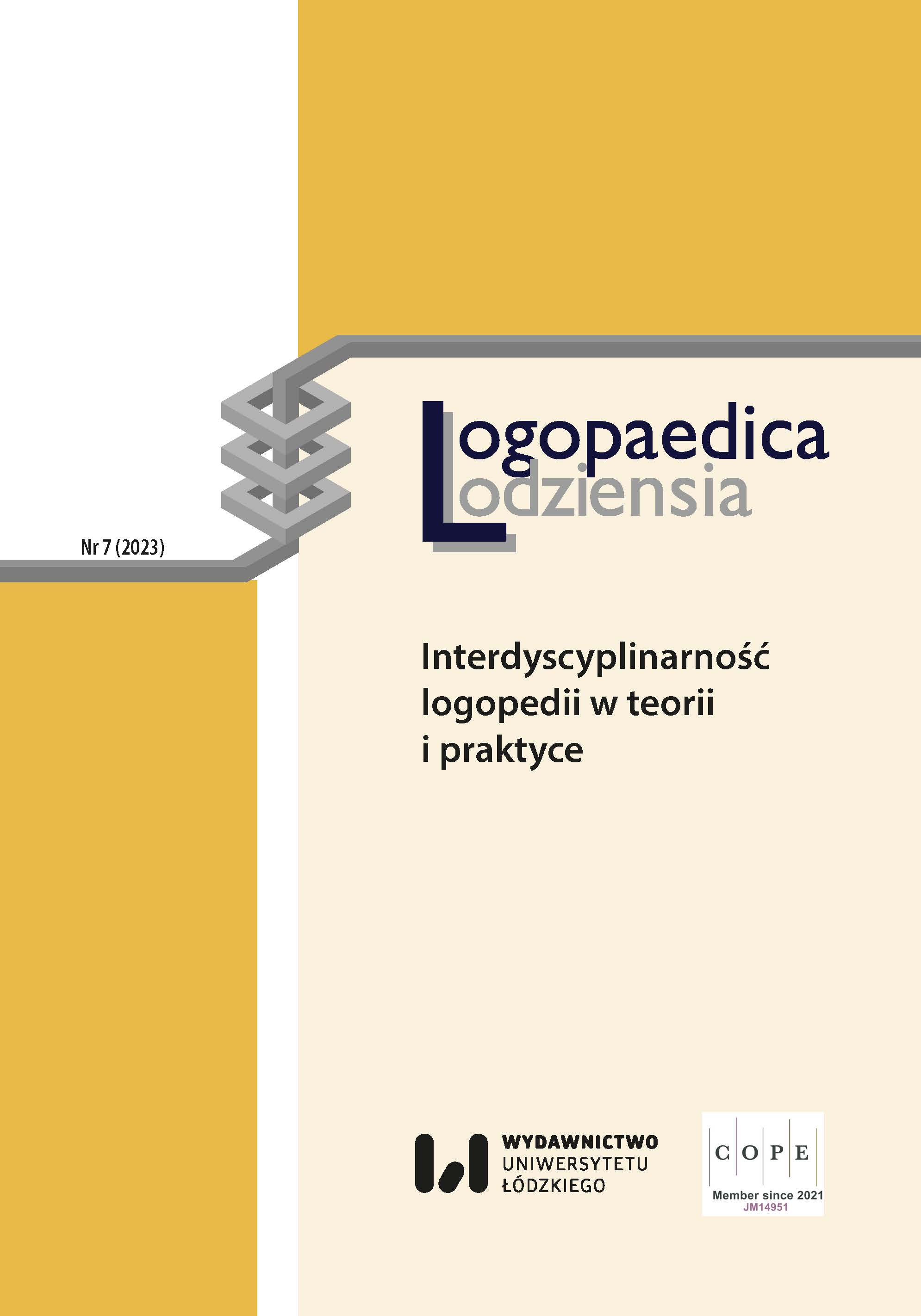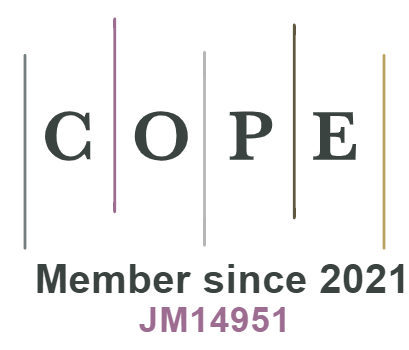Urojeniowy typ schizofazji. Na przykładzie analizy tekstów schizofatycznych
DOI:
https://doi.org/10.18778/2544-7238.07.16Słowa kluczowe:
schizofazja, schizofrenia, urojenia, diagnoza zaburzeń mowy, kohezja, koherencjaAbstrakt
Schizofazję zwykle kojarzy się z niespójnością wypowiedzi w jej wymiarach semantycznym i formalno‑gramatycznym. Artykuł podnosi kwestię niespójności pragmatycznej tekstu i zawiera propozycje włączenia do spektrum schizofazji także wypowiedzi odnoszących się do urojeń. Zawarte w artykule przykłady analiz wypowiedzi osób cierpiących na schizofrenię, dokonane za pomocą skal do oceny schizofazji (TLC, KSOS) potwierdzają tę tezę.
Pobrania
Bibliografia
Andreasen N., 1979a, Thought, language, and communication disorders. I. Clinical assessment, definition of terms, and evaluation of their reliability, “Archives of General Psychiatry”, No. 36, pp. 1315–1321.
Google Scholar
Andreasen N., 1979b, Thought, language, and communication disorders. II. Diagnostic significance, “Archives of General Psychiatry”, No. 36, pp. 1325–1330.
Google Scholar
Andreasen N., 1980, Scale of the Assessment of Thought, Language, and Communication (TLC), Iova City: University of Iowa.
Google Scholar
Andreasen N., Grove W., 1986, Thought, language, and communication in schizophrenia: Diagnosis and prognosis, “Schizophrenia Bulletin”, No. 12, pp. 348–358.
Google Scholar
Andreasen N., Olsen S., 1982, Negative vs positive schizophrenia, “American Journal of Psychiatry”, Vol. 39, pp. 789––794.
Google Scholar
American Psychiatric Association, 2013a, Desk References to the Diagnostic Criteria from DSM–5, Arlington.
Google Scholar
American Psychiatric Association, 2013b, Diagnostic and Statistical Manual of Mental Disorders. Fifth Edition (DSM–5), Washington.
Google Scholar
Bhandari S., 2008, Psychopatologia opisowa, [in:] P. Wright, J. Stern, M. Phelan (eds.), Psychiatria. Sedno, Vol. 1, Wrocław: Urban & Partner, pp. 89–99.
Google Scholar
Boer N.J. de, Hoogdalem M. van, Mandl R.C.J., VoppelA.E., Begemann M.J., Dellen E. van, Wijnen F.N., Sommer I .E., 2020, Language in schizophrenia: relation with diagnosis, symptomatology and white matter tracts, “Schizophrenia”, No. 6, 10, https://www.nature.com/articles/s41537-020-0099-3 (accessed: 12.09.2023).
Google Scholar
Czernikiewicz A., 1998, Językowy wymiar przewlekłej schizofrenii, Lublin: Akademia Medyczna w Lublinie.
Google Scholar
Czernikiewicz A., 2004, Przewodnik po zaburzeniach językowych w schizofrenii, Warszawa: Instytut Psychiatrii i Neurologii.
Google Scholar
Czernikiewicz A., Woźniak T., 2001, Schizofazja, “Logopedia”, No. 29, pp. 7–36.
Google Scholar
Czernikiewicz A., Woźniak T., 2012, Diagnoza psychogennych zaburzeń mowy, [in:] S. Milewski, E. Czaplewska (eds.), Diagnoza logopedyczna, Gdańsk: Gdańskie Wydawnictwo Psychologiczne, pp. 415–480.
Google Scholar
Czernikiewicz A., Woźniak T., 2023, Teksty schizofatyczne. Zagadnienia diagnozy zaburzeń mowy w schizofrenii, Lublin: Wydawnictwo Uniwersytetu Marii Curie‑Skłodowskiej.
Google Scholar
Feldmann H., 1989, Aspekte der Wahndynamik, “Fortsschritte der Neurologie, Psychiatries”, Vol. 1(67), pp. 14–21.
Google Scholar
Grzywa A., 2000, Omamy i urojenia, Wrocław: Wydawnictwo Urban & Partner.
Google Scholar
ICD–11, n.d., https://icd.who.int (accessed: 10.09.2023).
Google Scholar
Kapur S., 2003, Psychosis as a state of aberrant salience: a framework linking biology, phenomenology, and pharmacology in schizophrenia, “American Journal of Psychiatry”, No. 160, pp. 13–23.
Google Scholar
Kuperberg G.R., 2010, Language in schizophrenia Part 1: an Introduction, “Language and Lingustics Compass”, Vol. 4(8), pp. 576–589.
Google Scholar
Liddle P., 1987, The symptoms of chronic schizophrenia. A reexamination of negative‑positive dichotomy, “British Journal of Psychiatry”, No. 151, pp. 145–151.
Google Scholar
Liddle P., 1996, Syndromes in schizophrenia and their neuropsychological and neuroanatomical correlates, [in:] C. Pantelis, H. Nelson, T. Barnes (eds.), Schizophrenia: A neuropschological perspective, Chichester: Wiley, pp. 299–316.
Google Scholar
Morris Ch.W., 1938, Foundations of the theory of signs, [in:] O. Neurath, R. Carnap, Ch.W. Morris (eds.), International encyclopedia of unified science, Vol. I, No. 2, Chicago: The University of Chicago Press, pp. 1–59.
Google Scholar
Schreber D.P., 1988, Memoirs of my nervous illness, Cambridge: Harvard University Press.
Google Scholar
Sims A., 1995, Speech and Language Disorders in Psychiatry, London: Gaskell.
Google Scholar
Woźniak T., 2005, Narracja w schizofrenii, Lublin: Wydawnictwo Uniwersytetu Marii Curie‑Skłodowskiej.
Google Scholar
Pobrania
Opublikowane
Wersje
- 2023-12-01 - (2)
- 2023-11-29 - (1)
Jak cytować
Numer
Dział
Licencja

Utwór dostępny jest na licencji Creative Commons Uznanie autorstwa – Użycie niekomercyjne – Bez utworów zależnych 4.0 Międzynarodowe.












